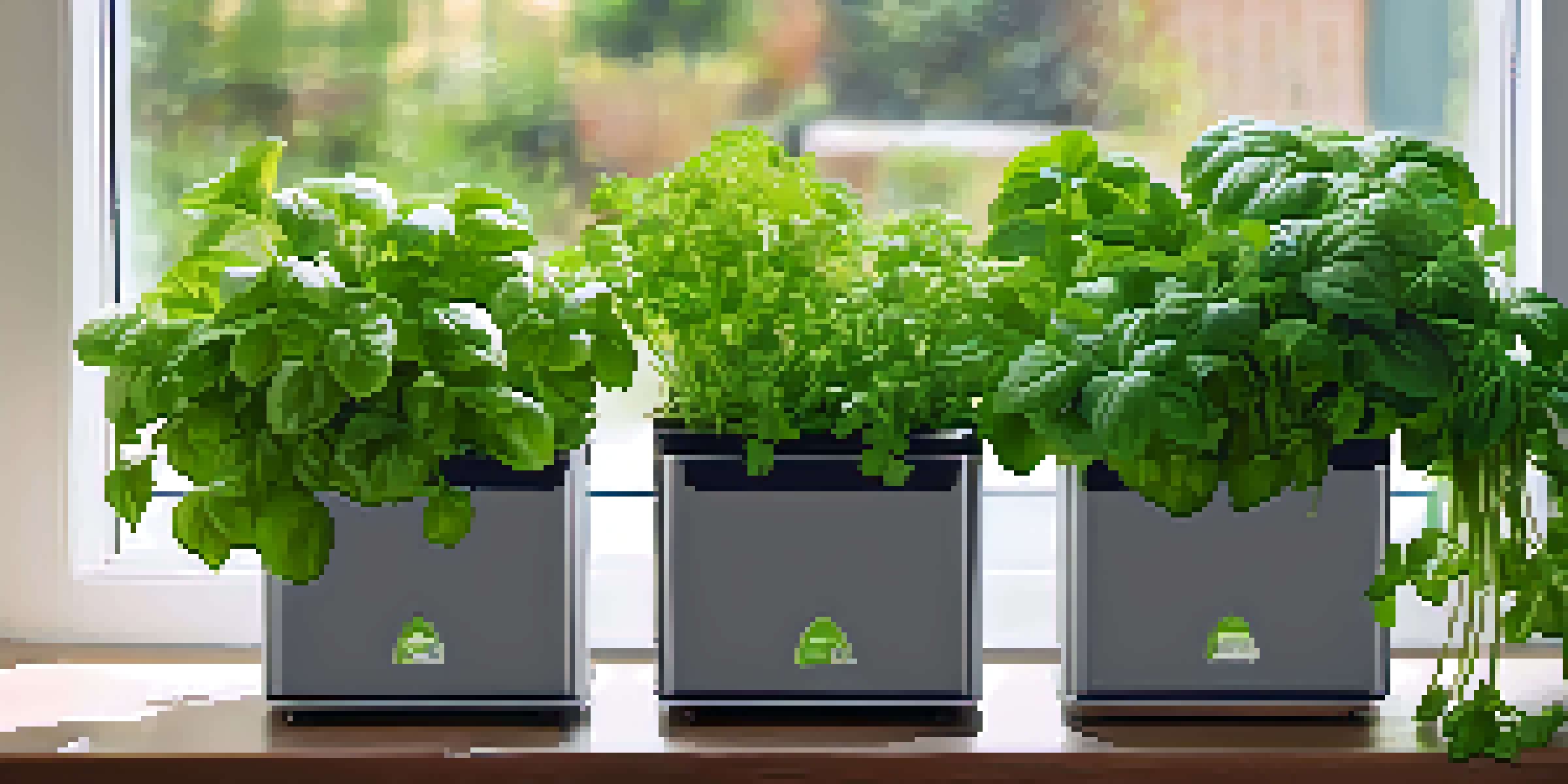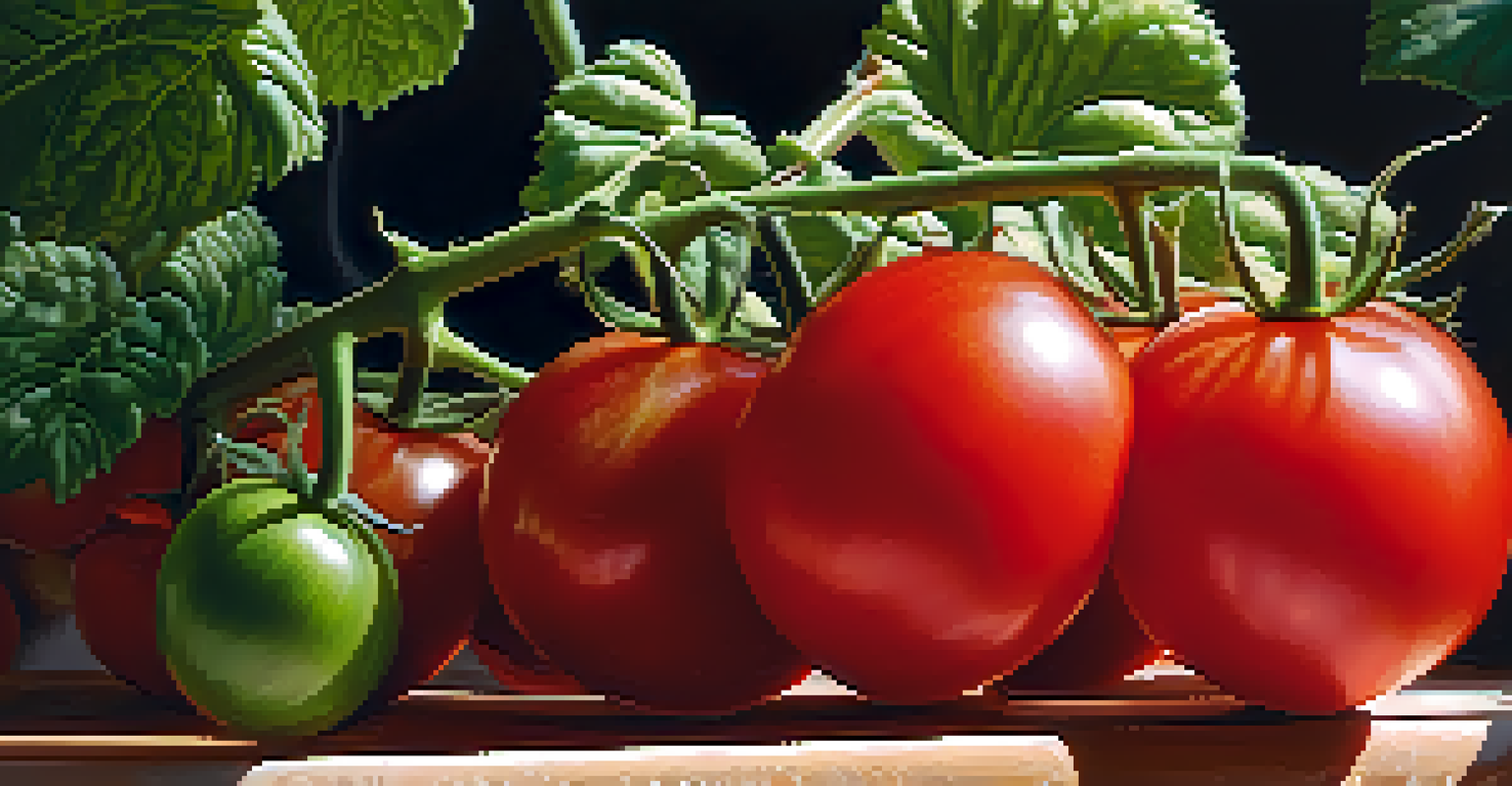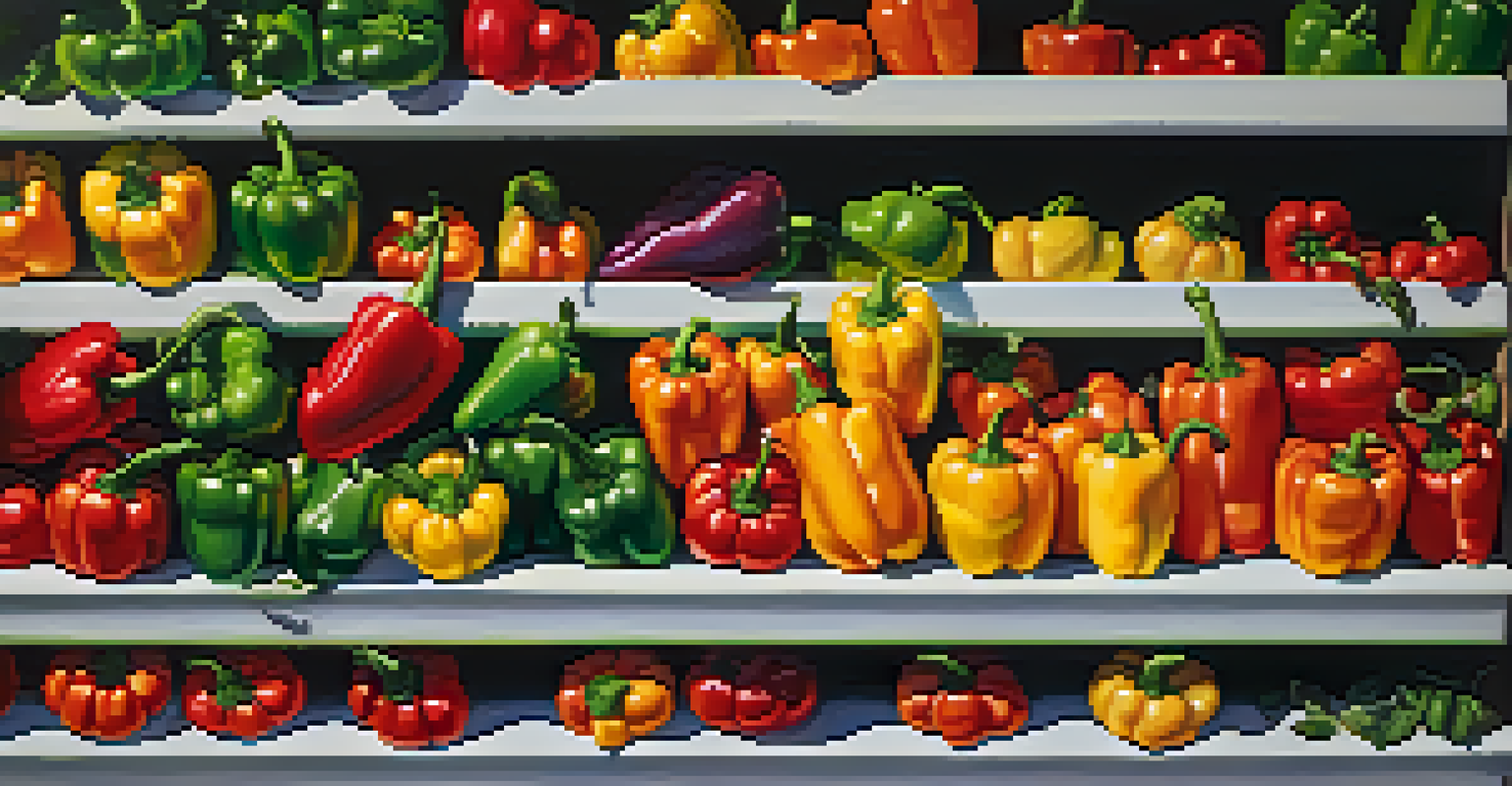Common Hydroponic Crops: What to Grow Without Soil

Understanding Hydroponics and Its Benefits
Hydroponics is a method of growing plants without soil, using nutrient-rich water instead. This technique allows for more control over the growing environment, resulting in healthier plants. For instance, by eliminating soil, you also reduce the risk of soil-borne diseases, which can be a significant challenge in traditional gardening.
The future of gardening is not in the soil but in the water.
One of the biggest benefits of hydroponics is the ability to grow crops in smaller spaces, making it ideal for urban gardeners. Imagine being able to cultivate fresh vegetables right in your apartment. Additionally, hydroponics typically uses less water than traditional farming methods, which is a crucial advantage in areas facing water scarcity.
Furthermore, hydroponic systems can yield crops faster than soil-based methods. With optimal conditions, plants can grow in a fraction of the time, providing quicker harvests and more produce. This efficiency makes hydroponics an attractive option for both hobbyists and commercial growers.
Lettuce: A Hydroponic Superstar
Lettuce is one of the most popular hydroponic crops, and for good reason! It grows quickly, usually ready for harvest in just 30 to 45 days. With various types available, such as romaine and butterhead, you can enjoy a diverse range of flavors and textures in your salads.

Hydroponic lettuce thrives in nutrient solutions that can be easily adjusted to meet its needs. This adaptability allows for consistent growth year-round, regardless of weather conditions. Picture having fresh, crunchy lettuce at your fingertips during the winter months, when traditional gardening is often impossible.
Hydroponics: Soil-Free Gardening
Hydroponics allows for efficient plant growth without soil, using nutrient-rich water to produce healthier crops.
Moreover, lettuce has a relatively low light requirement, making it suitable for beginners who might not have access to high-intensity grow lights. Starting with lettuce can build your confidence in hydroponics, paving the way for exploring more complex crops later.
Herbs: Adding Flavor Without Soil
Herbs like basil, mint, and cilantro are fantastic hydroponic choices. Not only do they add incredible flavor to your dishes, but they also grow rapidly, often ready for harvest within a few weeks. Imagine snipping fresh basil right from your countertop to enhance your pasta sauce!
Growing your own food is like printing your own money.
Growing herbs hydroponically allows for a continuous supply, meaning you can enjoy fresh herbs year-round. This perpetual freshness is a game changer for home cooks and food enthusiasts alike. Plus, they require minimal space, making them ideal for small indoor gardens.
In addition, herbs generally thrive in a variety of hydroponic systems, whether it's a simple wick system or a more complex deep water culture. This versatility invites beginners to experiment and find the method that works best for them, making herb cultivation both accessible and rewarding.
Tomatoes: The Hydroponic Heavyweights
Growing tomatoes in a hydroponic setup can yield incredible results, producing juicy, flavorful fruits. Unlike traditional soil gardening, hydroponic tomatoes can be grown vertically, saving space and making it easier to manage the plants. Imagine plucking ripe tomatoes from a vertical garden right in your living room!
Tomatoes do require a bit more attention compared to leafy greens, as they need support structures and specific nutrient solutions. However, the effort is well worth it when you bite into a fresh, homegrown tomato. These fruits thrive in a controlled environment, often resulting in higher yields than their soil-grown counterparts.
Ideal Crops for Hydroponics
Crops like lettuce, herbs, and tomatoes thrive in hydroponic systems, offering fast growth and higher yields.
Moreover, hydroponic tomatoes are less susceptible to pests and diseases, thanks to the absence of soil. This means you can enjoy your homegrown produce without worrying about harmful chemicals or pesticides. Embracing hydroponics for tomatoes not only enhances your gardening experience but also contributes to healthier eating.
Peppers: Colorful and Crunchy Choices
Peppers, including bell peppers and hot varieties, are excellent candidates for hydroponic gardening. They thrive in nutrient-rich solutions and can produce vibrant fruits in a range of colors. Imagine a rainbow of peppers ready to be harvested right from your home!
Like tomatoes, peppers do require some additional care, such as pollination assistance, especially if you're growing them indoors. However, with proper attention and the right conditions, they can flourish and provide bountiful harvests. This makes them a rewarding challenge for those looking to expand their hydroponic skills.
Additionally, growing peppers hydroponically can lead to quicker ripening and a longer growing season. This means more opportunities to enjoy your favorite spicy or sweet peppers throughout the year. The satisfaction of growing your own peppers is truly unmatched!
Strawberries: Sweetness in a Soilless Setup
Strawberries may not be the first crop that comes to mind for hydroponics, but they can thrive in this environment, producing deliciously sweet fruits. These berries can be grown in various hydroponic systems, including vertical setups that maximize space. Picture a cascading wall of strawberries, ripe for the picking!
Hydroponic strawberries often yield fruit earlier than traditional methods, allowing you to enjoy fresh berries sooner. They do require a little more attention, such as managing light and temperature, but the results are incredibly rewarding. Fresh strawberries can elevate any dish, from salads to desserts.
Versatility of Hydroponic Systems
Hydroponic gardening can be adapted to various plants, making it suitable for both beginners and experienced gardeners.
Moreover, growing strawberries hydroponically can reduce the risk of pests and diseases that typically affect soil-grown plants. This means you can indulge in the sweetness of strawberries without the worry of harmful chemicals. It's a delightful way to enjoy nature's candy!
Microgreens: Nutrient Powerhouses
Microgreens are tiny, nutrient-dense plants that can be grown hydroponically in just a couple of weeks. Varieties like radish, broccoli, and sunflower are packed with flavor and nutrients, making them a fantastic addition to salads, sandwiches, and smoothies. Imagine sprinkling fresh microgreens on your meals for an instant nutrient boost!
One of the greatest advantages of growing microgreens is their minimal space requirement and quick turnaround time. This makes them perfect for beginners or those with limited gardening space. You can easily set up a small tray on a windowsill and enjoy fresh microgreens in no time.

Additionally, microgreens are incredibly versatile and can be grown year-round, giving you access to fresh greens regardless of the season. The ease of cultivation and the health benefits they offer make microgreens a must-try for anyone interested in hydroponics. They're like little powerhouses of flavor and nutrition!